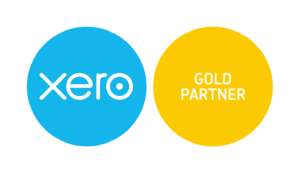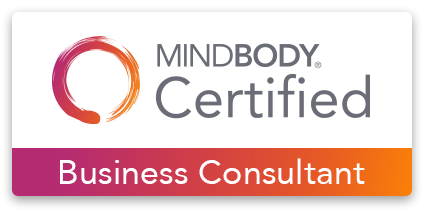Planning to start a business and not sure what type of business entity it should be? There are plenty of resources available that provide basic definitions for business entities. But definitions don’t show you the whole picture.
The type of business that you decide on can affect how you report your business income, when and how you pay taxes, and even how you pay yourself from the business. To provide a more robust picture of business entity types, we will introduce Jane.
Jane is considering starting a new business baking cookies and selling them online. Using Jane as an example, we’ll review the different business entities and why she might choose one over another.
In the first part of this blog series, we’ll start with the simplest type of business entity – the sole proprietorship.

Sole Proprietorship
Technically, a sole proprietorship isn’t an entity type – it is the lack of an entity. The minute that Jane starts her business and starts making money (or spending it), she is by default a sole proprietor, as an individual who hasn’t set up any other entity.
Reporting Business Income
As a sole proprietor, Jane’s revenue and expenses will be reported on her personal tax return at the end of the year (on a Schedule C). The net profit from the business will be included in her personal income, and she will be taxed at her ordinary tax rates. Additionally, she might have self-employment taxes added to her income taxes. Let’s take a look at how that might all work.
Year One
In her first year in business, Jane is getting everything up and running. She spends $10,000 of her own money on supplies, marketing, the website, and ingredients. She only sells $5,000 worth of cookies, so she has a net loss of $5,000. This $5,000 loss can be used on her personal tax return to offset her other income. Jane’s husband Ralph has a job where he makes $100,000, and their tax rate is 35%. Since she can use the $5,000 loss to offset the $100,000 of other income, the couple saves $1,750 in taxes.
Year Two
Jane’s business does better in year two. She sells $40,000 worth of cookies and only spends $30,000 on expenses. Now she has made a profit of $10,000. The bad news is that she has to pay taxes on this profit, but the good news is that she qualifies for the Qualified Business Income deduction. The QBI deduction allows you to reduce your business income by 20% – so only $8,000 of her $10,000 profit is taxed. So her income taxes on the business would be $2,800.
Self-Employment Tax
We aren’t finished with taxes yet for year two. As a sole proprietor, Jane would also be subject to self-employment taxes (similar to the social security and medicare taxes you pay as an employee). At the risk of throwing too many numbers at you, 92.35% of your net earnings from self-employment are subject to SE tax, and the SE tax rate is 15.3%. Some quick math tells us that her SE taxes on $10,000 of profit is $1,413. You might notice that we don’t take the QBI deduction when calculating the SE tax – only when computing the income tax.
To add it all up, Jane will pay $2,800 in income taxes and $1,413 in SE taxes. These taxes will be calculated when she files her personal income tax returns and added to the rest of her household income and taxes.
When to Pay Business Taxes
Once Jane starts earning a profit from her business (year two), she must pay taxes. As mentioned above, the taxes will be calculated when she files her personal tax returns at the end of the year. But when does she pay those taxes?
If the tax amount is small enough, it might be okay for Jane to wait until she files her tax returns to pay the extra taxes that are due. The IRS has rules about how much of your taxes have to be paid during the year and how much can wait until you file your taxes. If Jane leaves too much to be paid after the end of the year, she risks being penalized for underpayment.
Alternatively, Jane can make estimated tax payments during the year. Jane estimates that for year 3, she will owe about $5,000 in taxes because of her expected business income. With estimated tax payments, Jane will send payments of $1,250 each quarter to the IRS.
If Jane ends up owing more when the actual taxes are calculated, she can pay the difference with her return (or get a refund if she over-estimated). Estimated tax payments are due in April, June, September, and January every year. Check out the IRS website for more information on the self-employment tax and estimated tax payments.
Paying the Business Owner
Jane is organized and has a separate bank account for the business. She had to put $20,000 into the account when she first started, and at the end of year 1, it still had $15,000. After the profit in year 2, the balance was $25,000. Unfortunately, Jane was afraid to take any money out of the account to pay herself since she didn’t know how it would affect her taxes.
Since she is a sole proprietor, the answer is simple – it won’t affect taxes. Jane will be taxed on the profit in her business, and any money she puts into the account or takes out of the account does not affect the profit.
Jane could leave the $25,000 in the account to pay for future business expansion. She could take out $5,000 to help pay for the additional taxes she now has to pay. Or, she could take all $25,000 and hope the business continues to do well. None of that would have any effect on her taxes.
One Last Note on Sole Proprietorship
There were over 25 million sole proprietors that reported activity on their income tax returns for 2019. With new businesses surging after the “great resignation” during the pandemic, that number’s likely even higher now. And while a sole proprietorship is simpler to form than other business entities, it’s not right for every business.
Stay tuned for more installments of our business entity blog series to dive into income reporting and tax scenarios for corporations, LLCs and more. In the meantime, you might be interested in:
3 reasons bookkeeping is important year round
You are a badass at making money (Book Club)








